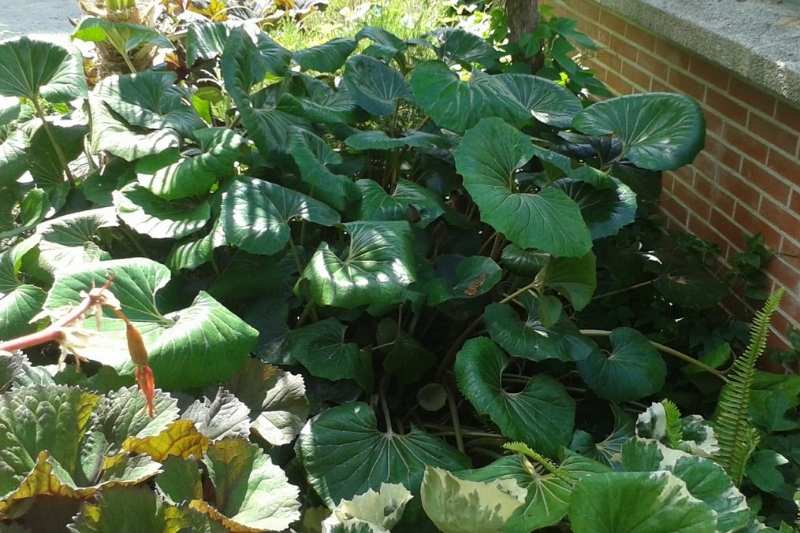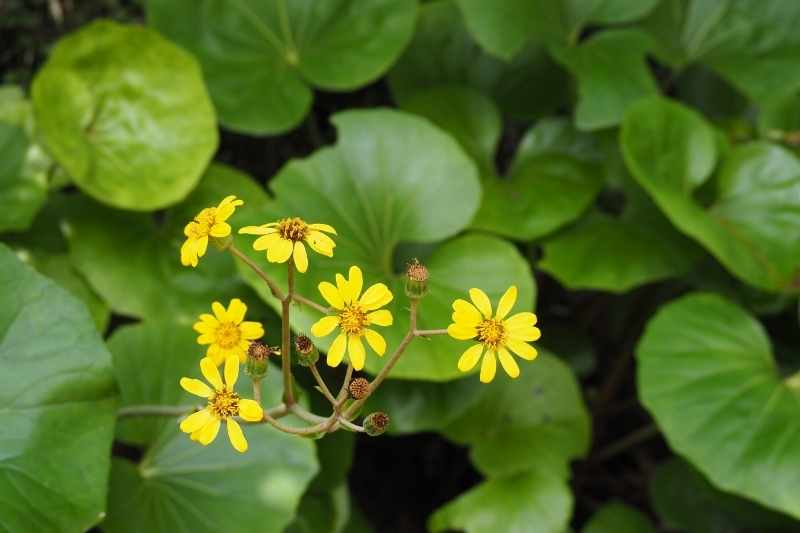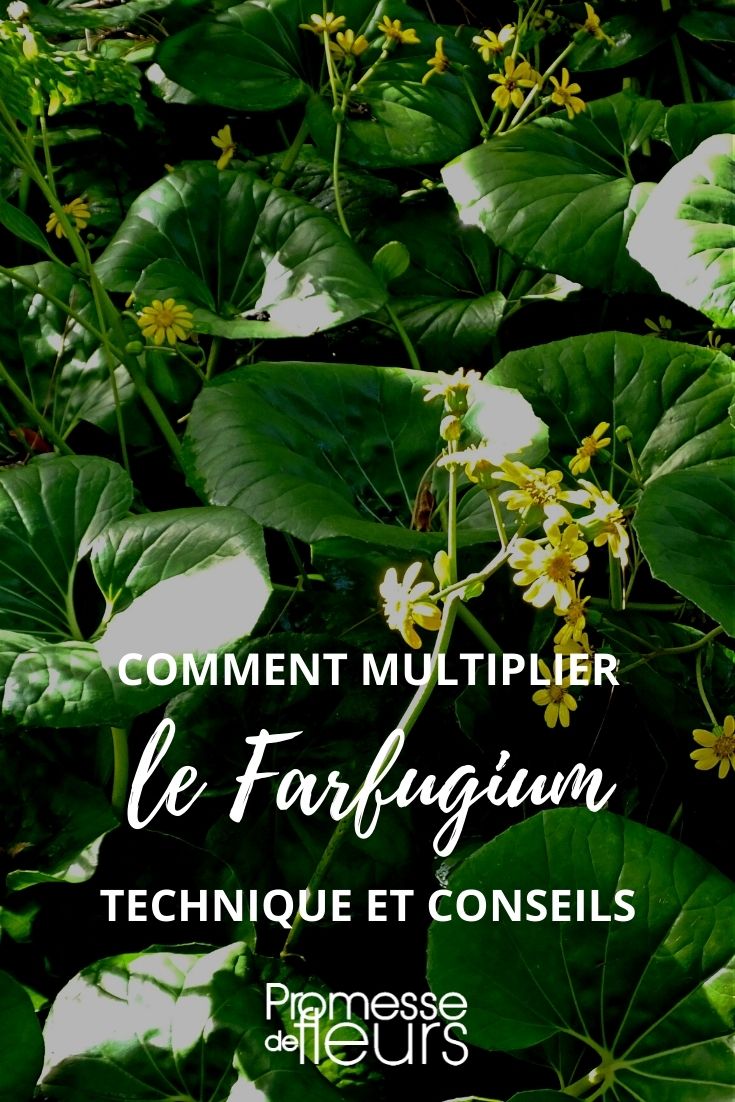Farfugiums benefit from division once they begin to develop well. This rejuvenates clumps and maintains their growth. There are mainly two techniques to multiply a Farfugium: sowing, which works only for the type species, or division of rootstocks, which we recommend.
This way you can obtain a new Farfugium in a pot for a shaded terrace, balcony or patio, or create new garden areas by pairing it with equally exotic-looking plants for a jungle vibe!

When it starts to form a nice clump, consider multiplying your Farfugium to create other equally lush areas (© Gwenaëlle David)
A few words about Farfugium
Native to the damp valleys of Japan and Korea, Farfugium japonicum — also called leopard plant (it’s actually the cultivar 'Aureomaculatum' that earned it this nickname) — is a superb perennial for cool to moist ground, shade-loving, with interesting hardiness for the exotic look it displays (about −15°C for the underground part, foliage disappearing below about −5°C). Its large round leaves are a glossy green, enormous on the cultivar 'Giganteum', and highly ornamental across varieties. It forms a remarkable evergreen groundcover in mild regions, sometimes spreading to 1 m across. Its yellow flowering, similar to that of Ligularias with which it shares family, occurs late in the season from October. Its rootstocks are only slightly running, so multiplication by this method is easy.
Sowing Farfugium
Sowing remains unpredictable because results do not always resemble the parent plant. Better therefore to sow the type species only, Farfugium japonicum.
- Sow in spring, in March or April, using seeds harvested in late autumn, previously refrigerated for 3 weeks;
- Place this seed tray under a cold frame;
- Prick out seedlings into small individual pots in nursery, before planting out in garden in October, or the following year at the end of spring.
This multiplication method remains delicate and prone to failure.

Flowering of Farfugium japonicum
Multiplying Farfugium by dividing clumps
Equipment required :
- A spade
- Optionally a knife
- Mulch
When to do it?
Best time is spring for division of a Farfugium rootstock, for example around March, its flowering occurring only late in the season several months later, around October. You do not then disturb the plant. You can carry out every 3 to 4 years.
How to divide a Farfugium?
Sectioning rootstocks is one way to proceed if plant is a few years old, cutting with a spade good sections of rootstock about 15 cm long. Pieces can then be immediately replanted in open ground, or for greater success planted in pots then placed in a cold frame or unheated greenhouse.
You can also divide a Farfugium after 3 to 4 years' growth to multiply it :
- Encircle the clump of Farfugium with your spade, turning around and driving the tool vertically about 20 cm deep to mark the plant’s footprint;
- Lift the clump using the handle as a lever and raising as gently as possible to avoid damaging its thick roots;
- Remove excess soil to clearly inspect root condition;
- Divide the clump into two parts, or three if the lifted clump is large, using your spade, or depending on the root mass with a clean knife;
- Check that each piece has a good proportion of rootstocks, roots and shoot bases;
- Replant each piece after preparing the soil, either directly in the garden, or in tubs or large pots, with a mix of garden soil, potting compost and well-rotted compost (a drainage layer of potsherds or gravel is essential for pot planting);
- Firm soil gently around the base, and water thoroughly;
- Mulch generously all around to keep substrate cool.

Multiplying Farfugium renews shaded garden scenes (© Cultivar 413)
To go further
- Find our range of Farfugiums in our online nursery
- See our full fact sheet to learn all about Farfugium
































Comments